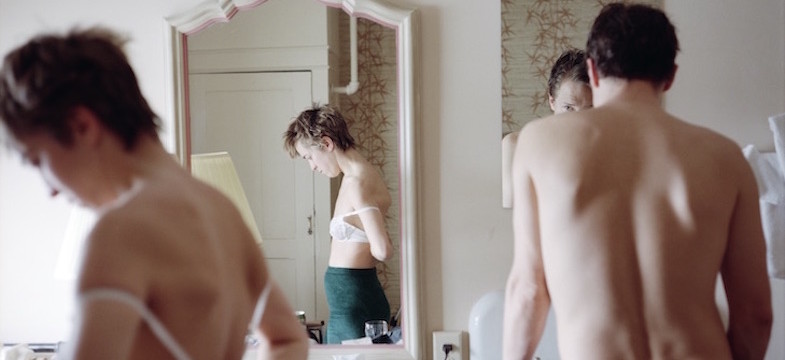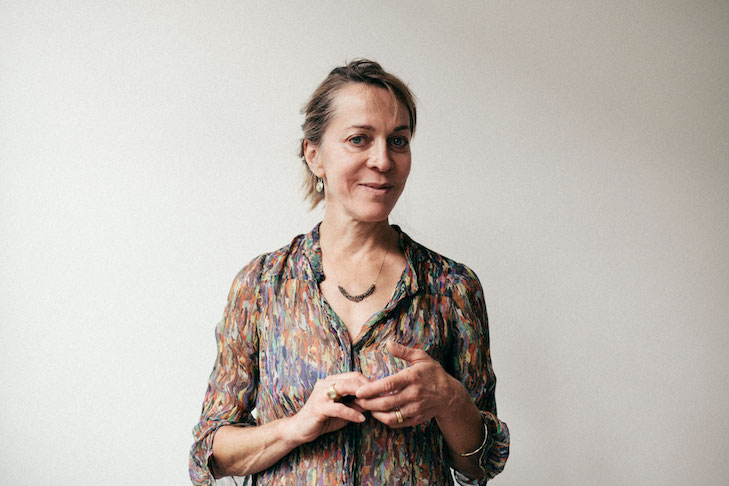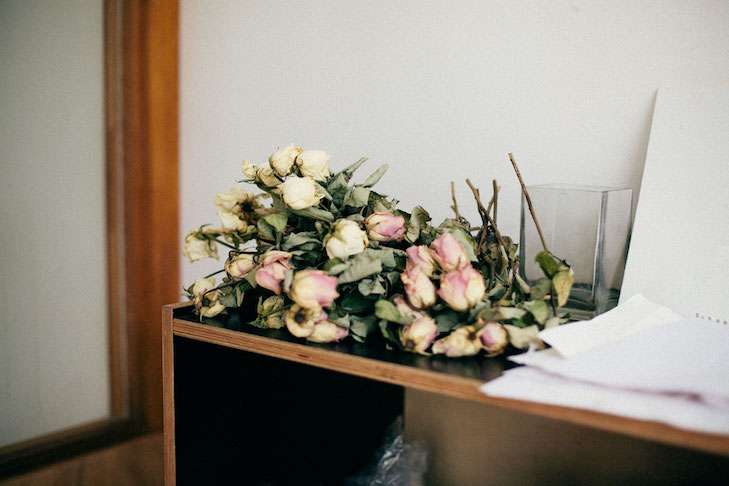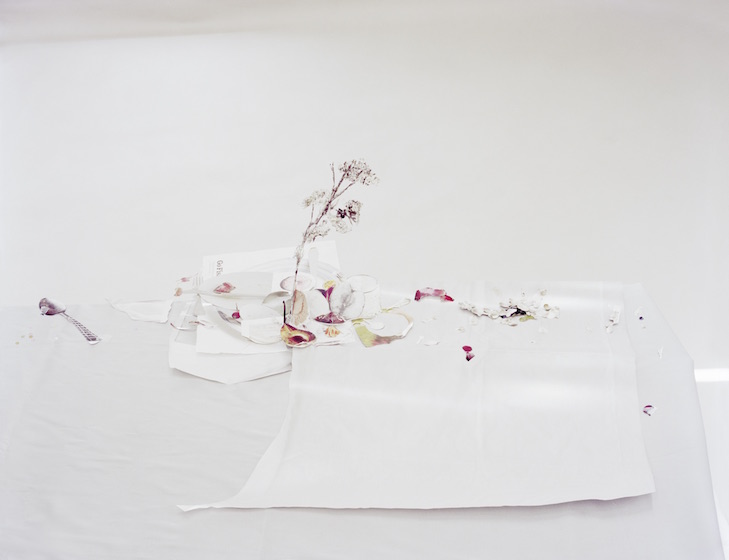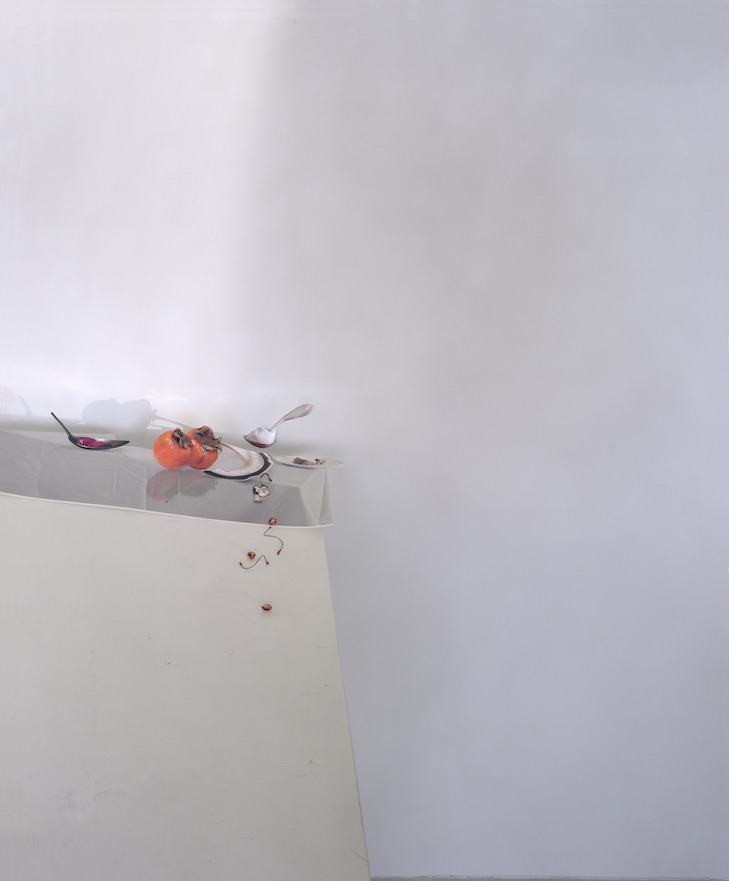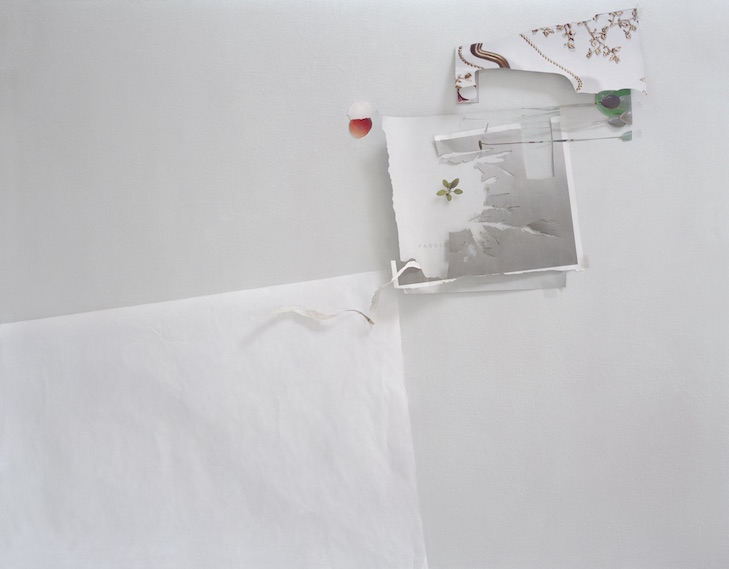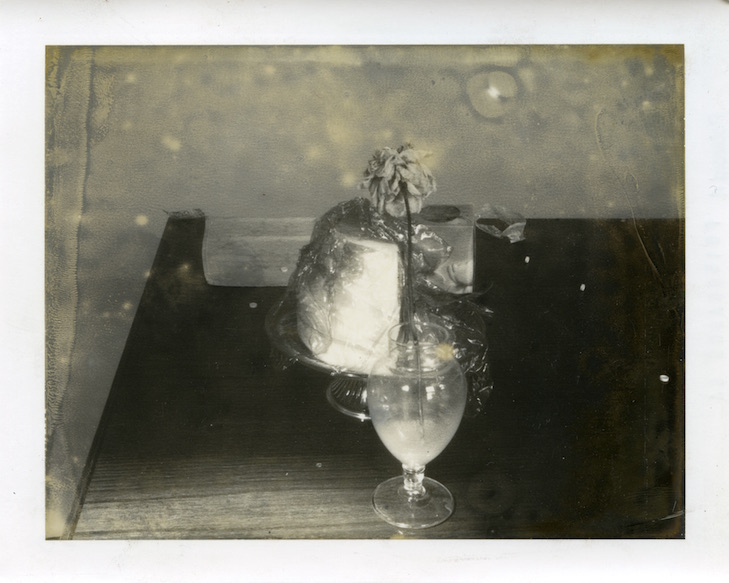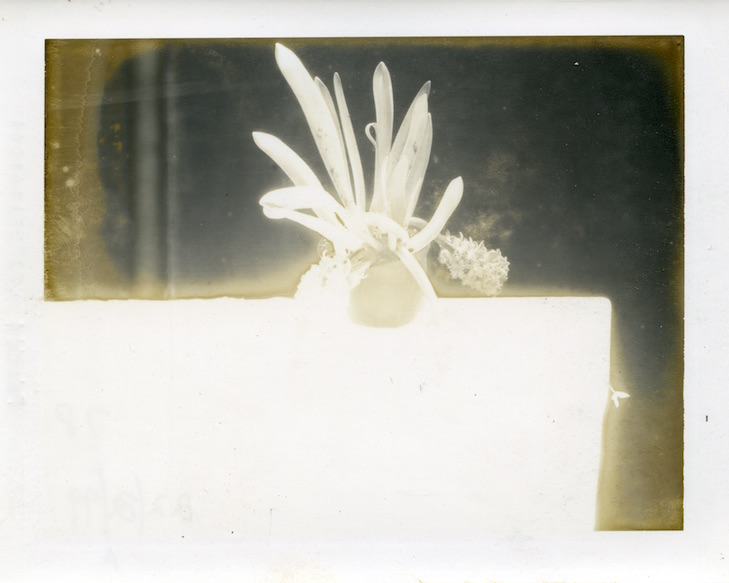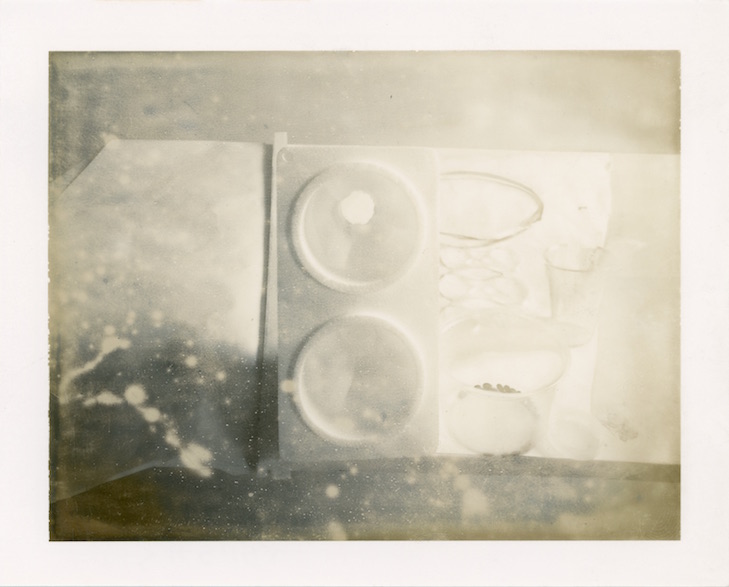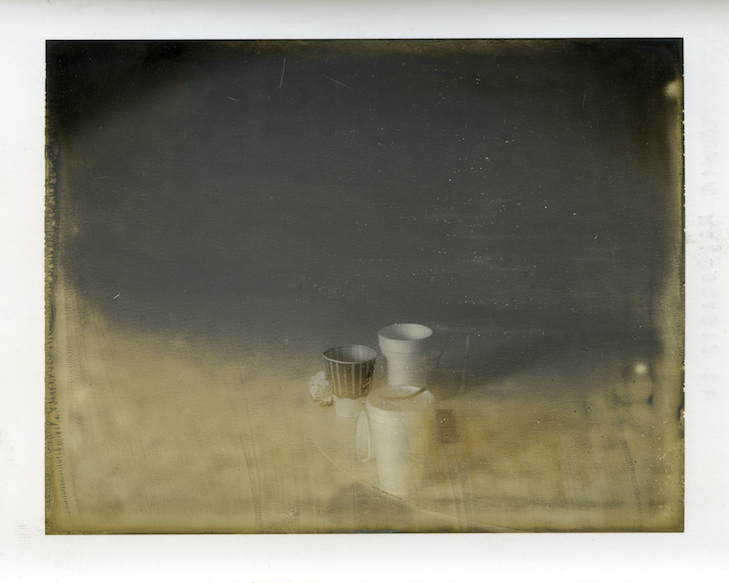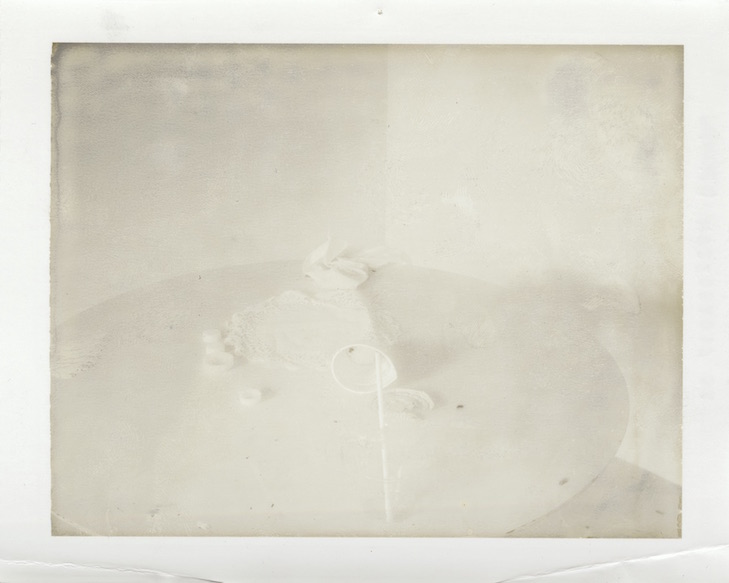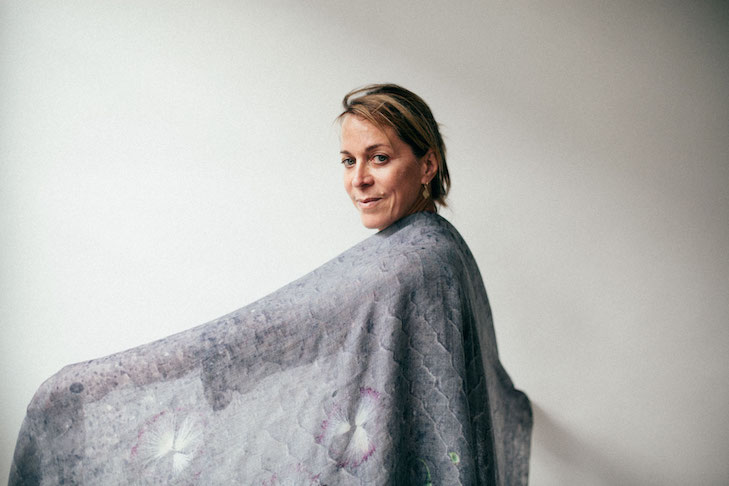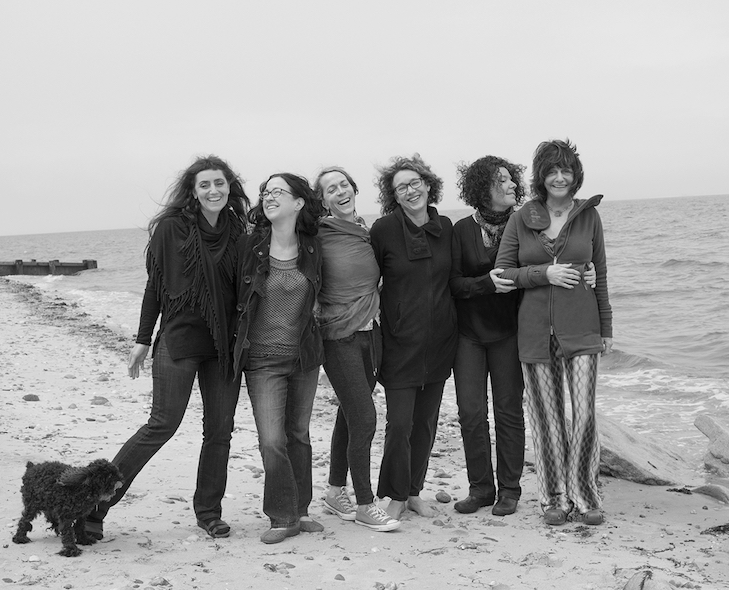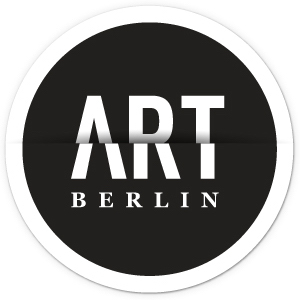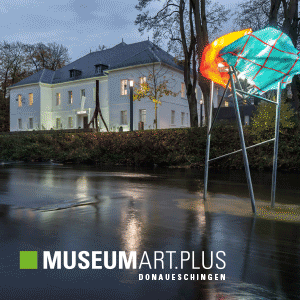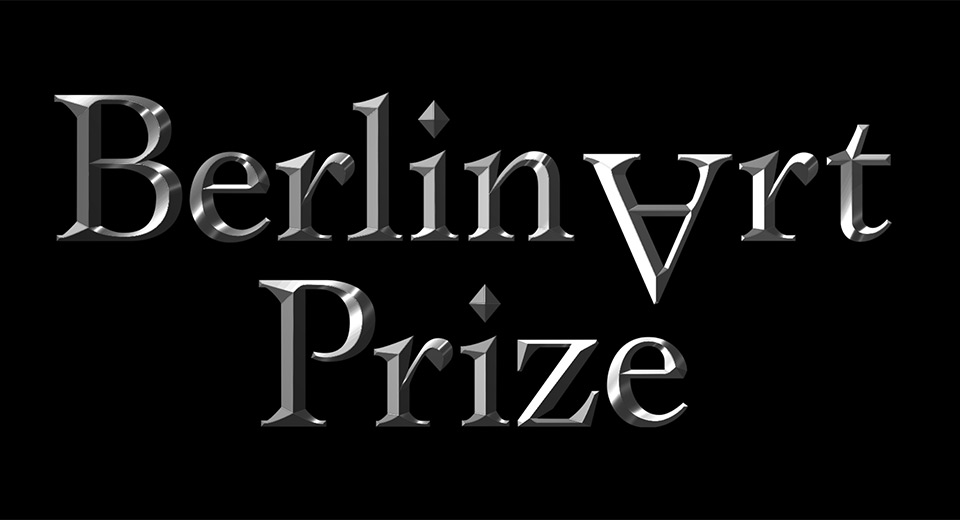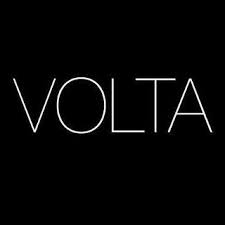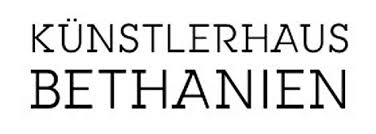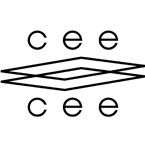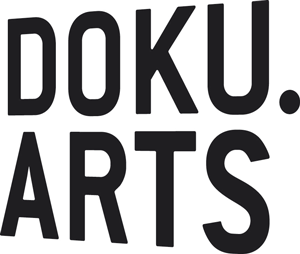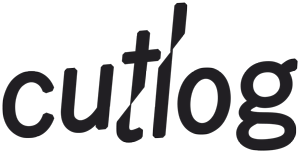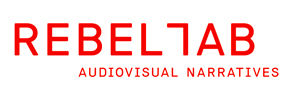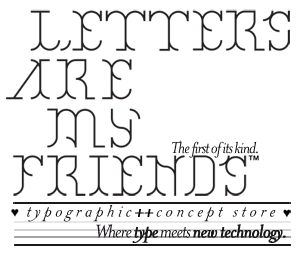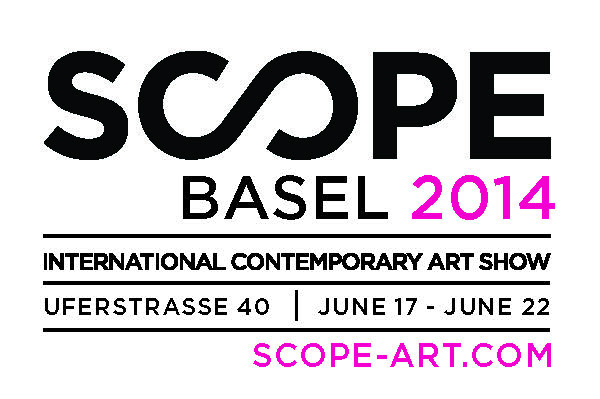We met Laura on the last day of her six-month stay as Artist in Residence at Künstlerhaus Bethanien. The period for an artist´s residency at Künstlerhaus Bethanien is generally one year, but the university she teaches at wouldn’t release her for longer, which in retrospect we now totally understand!
Following our interview and the sheer abundance of her projects and works, her stay seems way too short and we can´t help feeling that Berlin´s missing out as a result.
VENUS INFERRED
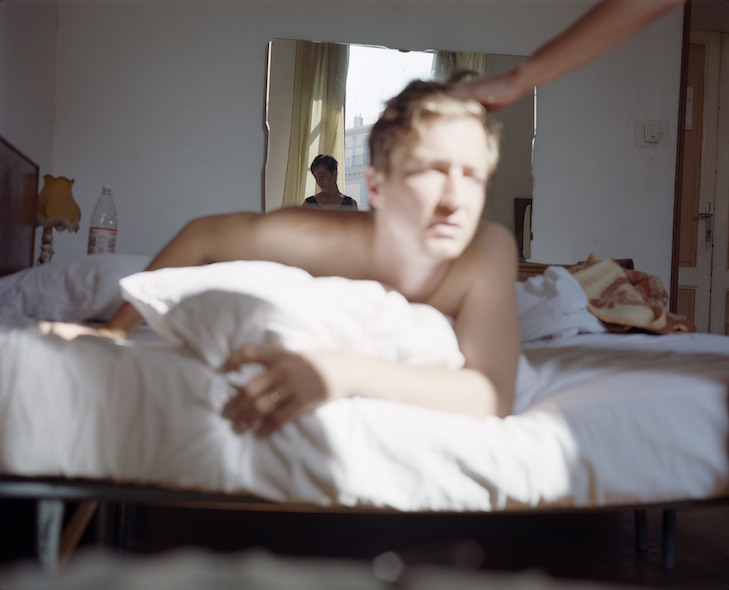
Untitled (Laura and Eric — head), Venus Inferred series, 1995 20″x 24″, Ed. 9 / 30″x 40″, Ed. 5 Archival Ink Print
Laura Letinsky is mostly known for her delicate and hauntingly questioning still lifes, but it is her first project, which she did with couples, that we talk about, and how she became aware of the legacy of visual and textual language.
What triggered this early series of yours?
I was really interested in how pop romance and pop culture is so much about love and romance, and the same words and visual cues have come from what used to be the Sacred and then moved into the secular in the form of love and romance. I was totally intrigued by renaissance paintings and how that has formed Calvin Klein ads, for example, and ideas about love and romance, such as: “I want to die for you, you are the only one” attitude.
That was all the stuff people also said about God; it´s very passionate.
And all that language, visual and textual, then became the stuff of pop culture. How you love or have sex, or fuck or however you want to describe it, is a political act.
There is a politic aspect to it, and even if that’s not overt, it´s always part of it.
ILL FORM AND VOID FULL
What made you move on to still lifes? Isn´t a person more revealing than an object?
I think this is a simple idea. People have learned how to hold themselves for photographs, how to present themselves.
I became more interested in objects, particularly in the way a 17th-century Dutch, or Flemish still life painting merges with the southern Renaissance tradition in the camera to really establish a set of ideas about how to see and know and be in the world.
The photographs become a kind of rhetorical force that then shapes how we see and understand the world.
I was really interested, and still am, in how aligned photography is with consumer culture. In the 17th century you have early globalism, early mercantilism, early capitalism, and the way they processed this new-found wealth was to make these still lifes and again there was this move towards the secular.
I was really fascinated by how photography comes about not as an invention but really as a realization of a set of ideas about how to see and understand the world, which is then how to sell the consumer what they need.
Please explain this a bit further!
You see it in everything like from Irvin Penn to again Calvin Klein ads to Home Beautiful to Elle Décor to Martha Stewart. The home is again really this place that is so idiosyncratic and so individual and yet it´s completely formulaic. Like we are all told how to be in our home, like you need new dishes for Easter.
I was really interested in the still life as the aftermath, as what was left behind that you either wanted to get rid of or didn´t pay attention to but which nonetheless persisted, which again is a very photographic idea, the resistance of the photograph.
I was really intrigued by these „after“ scenes.
TIME’S ASSIGNATION, AND OTHER POLAROIDS 1997-2007
Those still lifes parallel the works that are the reason that Christoph Tannert, curator of Künstlerhaus Bethanien, wanted us to talk to you in the first place, the publishing of your book in September this year and also the following body of work. The absence of persons, of human life even, seem to be a given in this series. These objects stand alone, for themselves. Washed-out but at the same time luminous and glowing like a winter sun. I imagine that if you took a snapshot of the soul of things, they would look like that.
How did these come about?
These works started out as sketches. The type 55 film allowed me to see the composition and to see the focus, but I didn´t ever intend for these to be like art or my work; I just was doing them because I needed to do them as a part of the process, but then I loved them and ended up keeping them. A publisher I worked with before was interested in doing another book and I had these ready to go and he too loved them and so we decided to move forward!
They are about nostalgia and they are again about romance but they aren´t nostalgic.
I started them in Berlin actually. Back then I was married to someone who was a German literature scholar. I had graduated and was already teaching at the University of Chicago, but he had to be in Berlin for his work, so we stayed at this house at Müggelsee. I was interested in still life and there was this book by Norman Bryson called “Looking at the overlooked”, which was really fantastic.
I read that and I was trying to figure out how to not replicate old still lives because that seemed stupid and pointless. What is pertinent, what´s so relevant about the still life? I think of the Clinique ads, how about things look about the home. What that space is about.
There would be so many more projects to talk about, some mostly about fabric. Or, as Laura puts it:
It´s not heroic or big macho work and there´s also a feminist agenda to it
— projects such as “Stain” and the intriguing “Telephone Game”.
From an educational point of view, especially for emerging female artists, it must be “The Birthday Club”.
Made up of the photographers Marion Belanger, Mary Berridge, Ann Burke Daly, Laura Letinsky, Tanya Marcuse, and Jennette Williams, who all met at the Yale MFA program in the late 1980s and who have continued getting together to critique their works in progress, celebrate milestone birthdays, and give each other photographs as gifts.
In doing so, they have formed a strong counterpart to the very common Boy Networks described in many retrospective articles about male artists who went to school together. If women artists do the same? If so, it´s not talked about, as friendship is natural to women, it seems.
This, however, is a completely different conversation and we hope we will get the chance to talk about these topics with Laura, which means she has to come back to Berlin!
Fingers crossed!
Header Photo: Untitled (Laura and Eric), Venus Inferred series, 1993 / 20″x 24″, Ed. 9 / 30″x 40″, Ed. 5 / Archival Ink Print
Photo Credit: Kathrin Leisch and the artist

